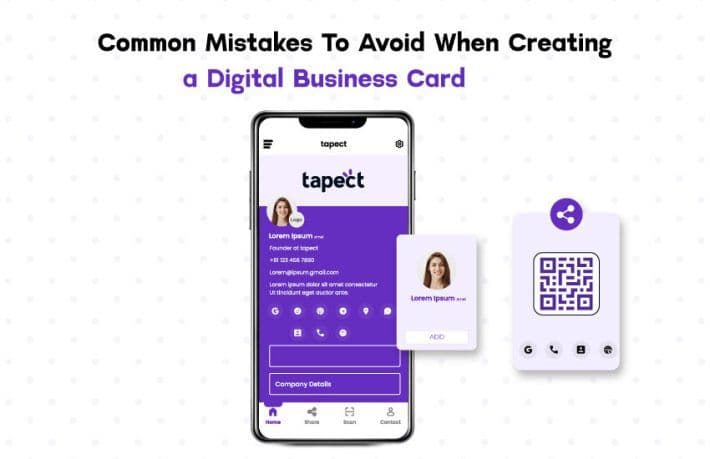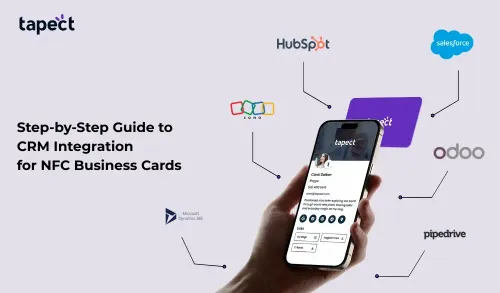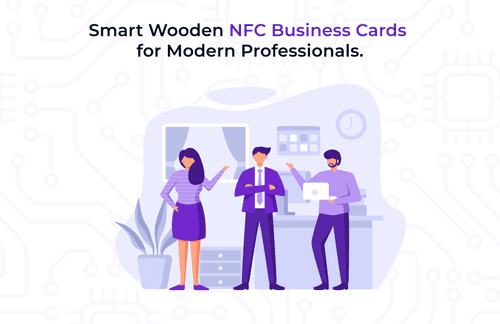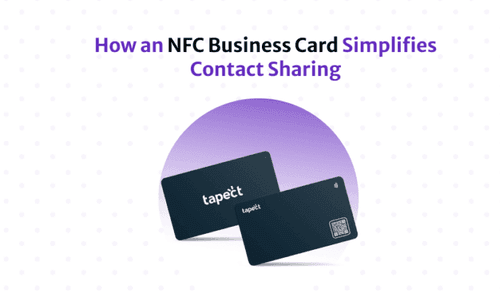We have provided extensive guidance on maximizing the effectiveness of your digital business card. However, today we will address the 14 errors to steer clear of when crafting one. The initial perception of individuals’ form of your digital business card holds significance as it influences their decision to reach out to you.
Whether you are a business entity or an individual developing digital business cards, it is crucial to bear in mind these 14 blunders that could lead to forgetfulness. Without delay, let’s begin.
1. Missing real profile picture:
Having a genuine and professional profile picture is essential for your success. While you may underestimate the significance of a quality profile picture, it could have a detrimental impact on you and your business. Others may perceive you as inauthentic and lacking creativity. Consequently, you may struggle to establish connections or convert leads.
2. Ignoring the importance of an introduction:
Can be detrimental. Whether you are representing yourself professionally or your business, a concise and clear introduction is essential. Imagine meeting new people in a professional setting – introducing yourself becomes crucial. Avoid leaving others guessing about your identity, profession, and what you can offer them.
If you struggle with crafting a compelling introduction, fret not. wCard.io offers an AI tool that guides you through simple questions to create an impressive brief introduction.
3. Overcomplicated design:
You should keep the design of your card simple and avoid overcomplicating it. Make it easy for people to go through your card and also don’t overstuff it with content. Your card design should not distract people from the essential information. Remember, less is more when it comes to business card design. Focus on including only the most important details and keep the overall look clean and professional. A well-designed card will leave a lasting impression and make it easier for people to remember you and your business.
4. Inconsistent colour branding:
Ensure your digital business card aligns with your branding by using consistent colours across all platforms. Matching colours to your social media profiles or logo can enhance brand recognition.
5. Lack of contact details:
Always include contact information on your digital business card, such as phone numbers and email addresses, to make it easy for potential clients to reach out to you. Make sure also to include links to your social media profiles and website, so that clients can easily connect with you online. Providing multiple ways for clients to contact you will help increase your accessibility and ultimately lead to more business opportunities.
6. Utilizing low-quality images/videos:
Use high-quality images and videos on your digital business card, especially if you are in industries like real estate or graphic design. Clear visuals can help build trust with customers. Investing in professional photography and videography can showcase your work in the best light and make a lasting impression on potential clients. High-quality visuals can convey your attention to detail and commitment to excellence, setting you apart from competitors. Remember, a picture is worth a thousand words, so make sure your digital business card speaks volumes about your brand.
7. Not including a call to action:
Incorporate a clear call to action on your digital business card to guide viewers on the next steps, such as “Follow me” or “Email me.”Make it easy for your audience to engage with you by providing a simple and direct call to action. Whether you want them to connect with you on social media, visit your website, or reach out via email, a clear CTA can help drive action and make your digital business card more effective.
8. Ignoring social media links:
Don’t neglect to add social media links to your digital business card. It can enhance trust, visibility, and brand establishment among potential customers.Make sure to include links to your Facebook, Instagram, Twitter, and LinkedIn accounts on your digital business card. This will allow potential customers to easily connect with you on their preferred social media platforms and stay updated on your latest news and offers. Remember, building a strong online presence is key to attracting and retaining customers in today’s digital age.
9. Ignoring localization:
Consider localization by using platforms with multilingual support for a wider reach and better connection with your target audience. Expanding your reach to different language speakers can help increase engagement and build trust with your audience. By utilizing platforms that offer multilingual support, you can effectively communicate your message and tailor your content to specific cultural nuances. This level of personalization can make a significant impact on the success of your brand in international markets.
10. Direct WhatsApp chat link missing:
Include a direct WhatsApp chat link on your digital business card to offer multiple communication options for potential clients. Sure, I can help you set up a direct WhatsApp chat link on your digital business card. It’s a great way to offer potential clients multiple communication options and make it easier for them to reach out to you. Let me know if you need any assistance with this!
11. Underestimating contact form:
Add a contact form to your digital business card to facilitate inquiries and networking efforts, making it easier for people to reach out to you. Simply include fields for name, email, subject, and message on your contact form, along with a submit button for easy communication. This simple addition can make a big difference in how potential clients or collaborators can connect with you.
12. Neglecting to activate SEO optimization:
Enable SEO optimization on your digital business card to increase visibility and reach potential customers through search engines like Google. By incorporating relevant keywords, meta descriptions, and alt text for images, you can improve your digital business card’s ranking on search engine results pages. Additionally, regularly updating your content and obtaining backlinks from reputable websites can further enhance your SEO efforts and attract more organic traffic to your online presence.
13. Neglecting a custom domain:
Utilize a custom domain for your digital business card URL to improve SEO optimization, brand perception, and trust with potential customers. By using a custom domain for your digital business card URL, you can establish a more professional and refined image for your brand. This can differentiate you from competitors and leave a lasting impact on visitors. Moreover, a custom domain can simplify the process for customers to recall and distribute your URL, boosting the chances of them revisiting your site later on.
14. Not using data to update marketing and improve cards:
Leverage digital business card analytics to refine your marketing and networking strategies for better engagement and conversions. With detailed insights into how recipients interact with your digital business card, you can tailor your outreach efforts more effectively. By understanding which information or design elements resonate most with your audience, you can optimize your marketing materials for increased engagement and ultimately drive more conversions. By leveraging analytics, you can make data-driven decisions to enhance your networking strategies and make meaningful connections that lead to valuable business opportunities.
Conclusion:
Here are 14 mistakes to avoid when creating your digital business card. Visit Tapect.com to make a tech-savvy digital business card with advanced features not found on other platforms. Utilize all features and optimize your digital business card for optimal results. Track and measure your results to pinpoint areas for improvement. Lastly, remember to regularly update your digital business card to stay competitive.
Give Tapect.com a try today
Effortlessly craft a digital business card for yourself or your team.



